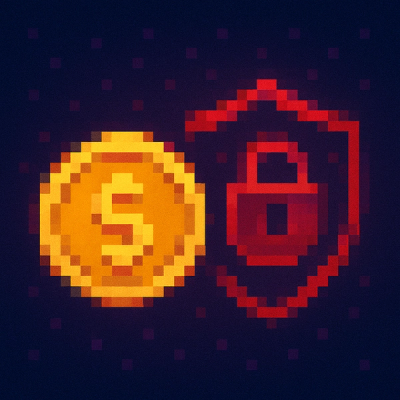
Security News
Security Community Slams MIT-linked Report Claiming AI Powers 80% of Ransomware
Experts push back on new claims about AI-driven ransomware, warning that hype and sponsored research are distorting how the threat is understood.
@nebula.js/sn-boxplot
Advanced tools
The box plot is suitable for comparing range and distribution for groups of numerical data, illustrated by a box with whiskers, and a center line in the middle. The whiskers represent high and low reference values for excluding outlier values.
Requires @nebula.js/stardust version 1.4.0 or later.
If you use pnpm: pnpm install @nebula.js/sn-boxplot. You can also load through the script tag directly from https://unpkg.com.
import { embed } from '@nebula.js/stardust';
import boxplot from '@nebula.js/sn-boxplot';
// 'app' is an enigma app model
const embeddable = embed(app, {
types: [
{
// register box plot chart
name: 'boxplot',
load: () => Promise.resolve(boxplot),
},
],
});
embeddable.render({
element,
type: 'boxplot',
fields: ['Region', 'Product Group', '=Avg(Sales)'],
});
This preset is defined with the box start and end points representing the first and third quartiles, and the center line representing the median, but the whisker length is adjusted by setting a percentile based whisker position. The example is using 5th/95th percentile. Setting mode in calculations to fractiles and fractiles in parameters to 0.05.
// 'app' is an enigma app model
embeddable.render({
element,
type: 'boxplot',
fields: ['Region', 'Product Group', '=Avg(Sales)'],
// overrides default properties
properties: {
boxplotDef: {
calculations: {
auto: true,
mode: 'fractiles',
parameters: {
tukey: 1.5,
fractiles: 0.05,
stdDev: 3,
},
},
color: {
auto: true,
},
elements: {
outliers: {
include: true,
sortOutliers: true,
},
},
presentation: {
whiskers: {
show: true,
},
},
qHyperCubeDef: {},
sorting: {
autoSort: true,
},
},
},
});
This preset is based on standard deviations, with the center line representing the average value, and the box start and end points representing one standard deviation variance. You can set the whisker length to a multiple of standard deviations. The example is using two standard deviations. Setting mode in calculations to stdDev and stdDev in parameters to 3.
// 'app' is an enigma app model
embeddable.render({
element,
type: 'boxplot',
fields: ['Region', 'Product Group', '=Avg(Sales)'],
// overrides default properties
properties: {
boxplotDef: {
calculations: {
auto: true,
mode: 'stdDev',
parameters: {
tukey: 1.5,
fractiles: 0.05,
stdDev: 3,
},
},
color: {
auto: true,
},
elements: {
outliers: {
include: true,
sortOutliers: true,
},
},
presentation: {
whiskers: {
show: true,
},
},
qHyperCubeDef: {},
sorting: {
autoSort: true,
},
},
},
});
The example defines elements using custom expressions, color and orientation.
The example based on the original box plot definition by J. Tukey. The center line represents the median (second quartile), and the box start and end points represent the first and third quartiles. Whisker length is set to 2 inter-quartile ranges. An inter-quartile range represents the difference between the first and third quartiles.
// 'app' is an enigma app model
embeddable.render({
element,
type: 'boxplot',
fields: ['Region', 'Product Group', '=Avg(Sales)'],
// overrides default properties
properties: {
boxplotDef: {
calculations: {
auto: false,
mode: 'tukey',
parameters: {
tukey: 2,
fractiles: 0.05,
stdDev: 3,
},
},
color: {
auto: false,
box: {
paletteColor: {
color: '#66ccbb',
index: -1,
},
},
point: {
paletteColor: {
color: '#cc6677',
index: -1,
},
},
},
elements: {
firstWhisker: {
name: '',
expression: {
qValueExpression: {
qExpr:
'Rangemax(Fractile( total <[Product Group]> Aggr( Avg(Sales), [Product Group], [Region] ) ,0.25 ) - ((Fractile( total <[Product Group]> Aggr( Avg(Sales), [Product Group], [Region] ) ,0.75 ) - Fractile( total <[Product Group]> Aggr( Avg(Sales), [Product Group], [Region] ) ,0.25 )) * 2), Min( total <[Product Group]> Aggr( Avg(Sales), [Product Group], [Region] ) ))',
},
},
},
boxStart: {
name: '',
expression: {
qValueExpression: {
qExpr: 'Fractile( total <[Product Group]> Aggr( Avg(Sales), [Product Group], [Region] ) ,0.25 )',
},
},
},
boxMiddle: {
name: '',
expression: {
qValueExpression: {
qExpr: 'Median( total <[Product Group]> Aggr( Avg(Sales), [Product Group], [Region] ) )',
},
},
},
boxEnd: {
name: '',
expression: {
qValueExpression: {
qExpr: 'Fractile( total <[Product Group]> Aggr( Avg(Sales), [Product Group], [Region] ) ,0.75 )',
},
},
},
lastWhisker: {
name: '',
expression: {
qValueExpression: {
qExpr:
'Rangemin(Fractile( total <[Product Group]> Aggr( Avg(Sales), [Product Group], [Region] ) ,0.75 ) + ((Fractile( total <[Product Group]> Aggr( Avg(Sales), [Product Group], [Region] ) ,0.75 ) - Fractile( total <[Product Group]> Aggr( Avg(Sales), [Product Group], [Region] ) ,0.25 )) * 2), Max( total <[Product Group]> Aggr( Avg(Sales), [Product Group], [Region] ) ))',
},
},
},
outliers: {
include: true,
sortOutliers: true,
},
},
presentation: {
whiskers: {
show: true,
},
},
qHyperCubeDef: {},
sorting: {
autoSort: true,
},
},
orientation: 'horizontal',
},
});
FAQs
Boxplot supernova
The npm package @nebula.js/sn-boxplot receives a total of 922 weekly downloads. As such, @nebula.js/sn-boxplot popularity was classified as not popular.
We found that @nebula.js/sn-boxplot demonstrated a healthy version release cadence and project activity because the last version was released less than a year ago. It has 7 open source maintainers collaborating on the project.
Did you know?

Socket for GitHub automatically highlights issues in each pull request and monitors the health of all your open source dependencies. Discover the contents of your packages and block harmful activity before you install or update your dependencies.

Security News
Experts push back on new claims about AI-driven ransomware, warning that hype and sponsored research are distorting how the threat is understood.

Security News
Ruby's creator Matz assumes control of RubyGems and Bundler repositories while former maintainers agree to step back and transfer all rights to end the dispute.

Research
/Security News
Socket researchers found 10 typosquatted npm packages that auto-run on install, show fake CAPTCHAs, fingerprint by IP, and deploy a credential stealer.